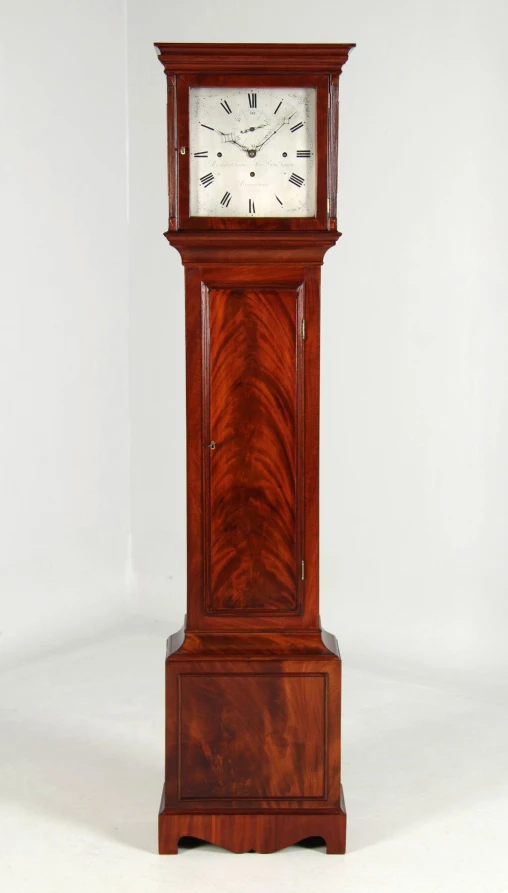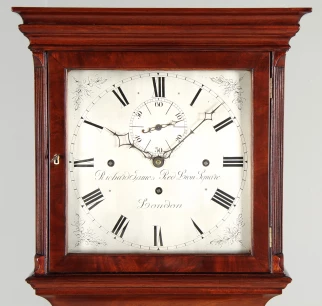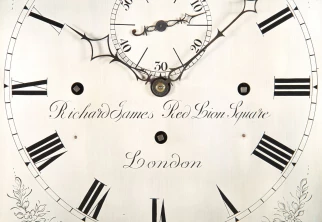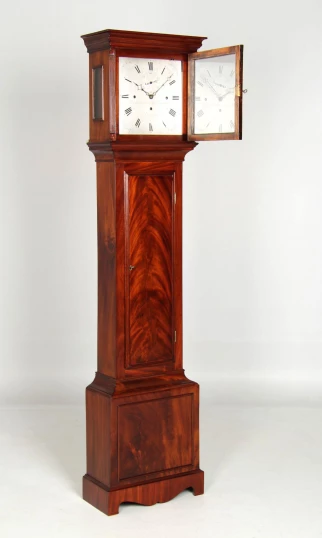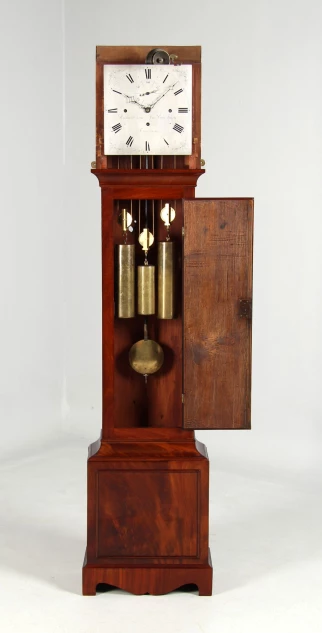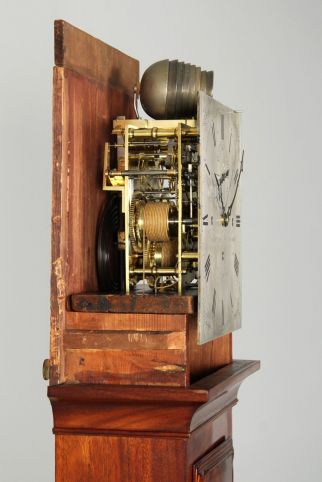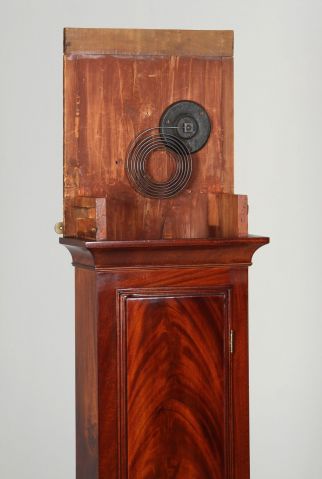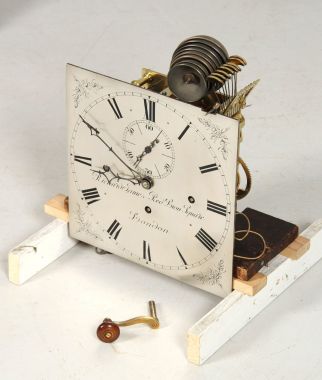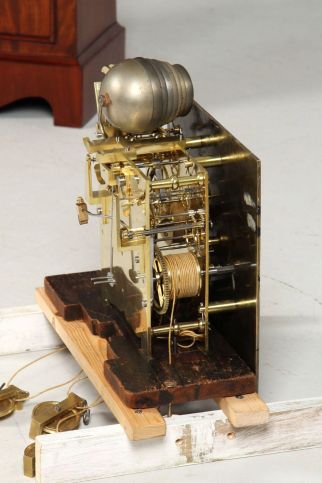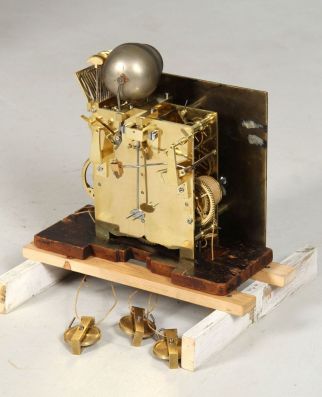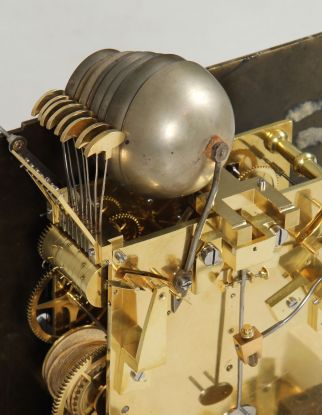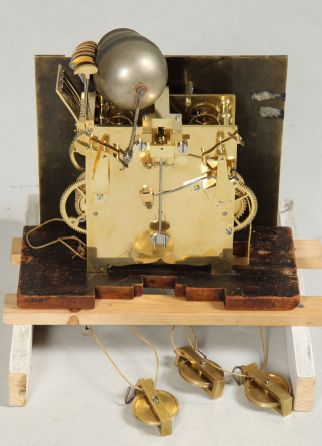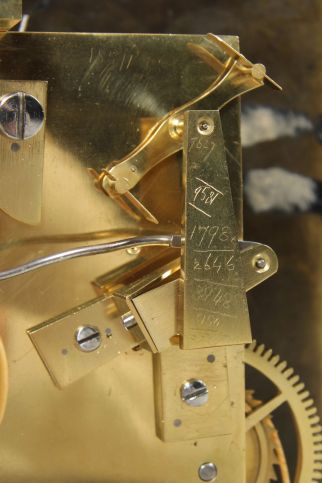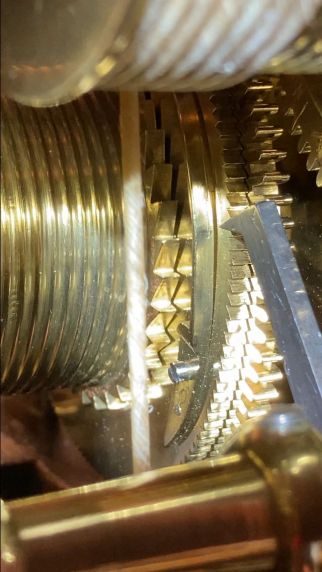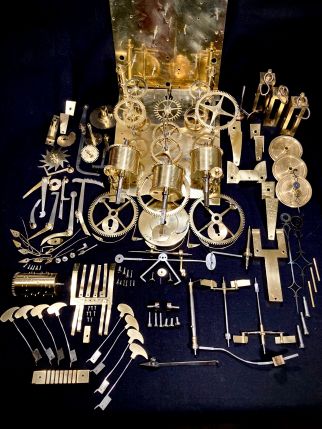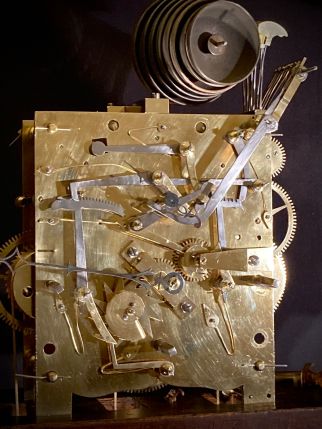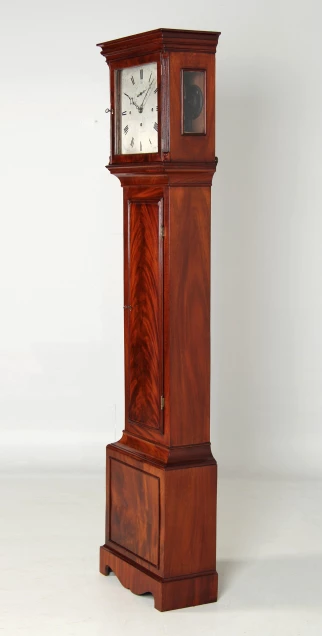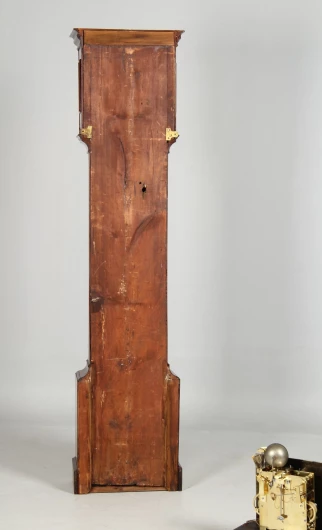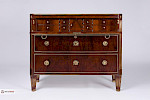Antique second pendulum grandfather clock with musical movement
London
Mahogany
late 18th century
Dimensions: H x W x D: 197 x 47 x 23 cm
Description:
Highly decorative and extremely exquisitely crafted second pendulum clock from the late 18th century.
The clockwork case made of solid and veneered mahogany wood stands on a cut-out base frame. The wood shows its full beauty above all on the slightly recessed centre section of the body. The austere head, bevelled on the front sides, has side windows that allow a view of the exceptionally solid movement.
Mounted between thick brass plates, the seconds pendulum movement has an 8-day power reserve and is equipped with a quarter-hourly carillon with Whittington chime. The hour strikes on a gong mounted on the rear wall of the head. When the door is open, we can see a small lever at the top right for switching off the striking mechanism.
The gear train is filigree and cleanly cut, with four legs in each of the individual cogwheels. In one of the attached photos, you can see the counter-lock of the movement, which ensures that the movement continues to run smoothly during winding. Also worth mentioning is the heavy pendulum suspension made from a solid piece of brass.
The pulleys for suspending the three brass-coated weights are similarly solid. Behind them swings the pendulum, typical of clocks of this type, with a wooden pendulum rod set in brass sleeves. A knurled nut for regulating the rate is located underneath the lead-cast brass pendulum bob.
The decorative, silver-plated solid brass dial bears the finely engraved signature: Richard James - Red Lion Square - London. Richard James is documented as having had his workshop in Red Lion Square from 1791.
The numerals on a light-coloured background are also engraved and inlaid with black shellac to ensure that the time is easy to read. We see Roman numerals for the hours and Arabic numerals for the decentralised seconds display.
Condition:
The case and movement are in very good condition. The movement has been completely dismantled and cleaned from top to bottom. The clock runs absolutely reliably and accurately.
The clockmaker Richard James is listed in the following directory:
Brian Loomes - Watchmakers & Clockmakers of the World p. 417
Clocks comparable in design and workmanship can be found in the specialised literature:
John Robey - The Longcase Clock Reference Book Vol. 2 Fig. 11.109
Derek Roberts - Die Englische Standuhr Fig. 268
Article found under: Clocks
Video Carillon grandfather clock
Also interesting
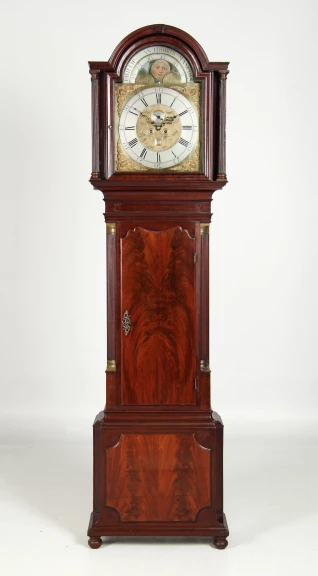
English grandfather clock with moon phase
England (Manchester)
Mahogany
second half of 18th century
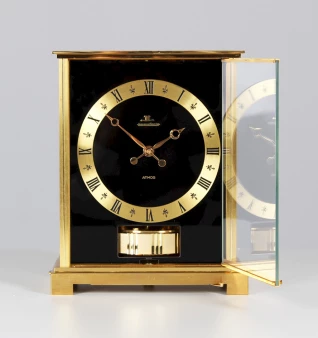
Jaeger LeCoultre - ATMOS VII black lacquered
Switzerland
Brass gold plated
Year of manufacture 1969

Pair of antique candlesticks
France
Bronze
Charles X around 1840
